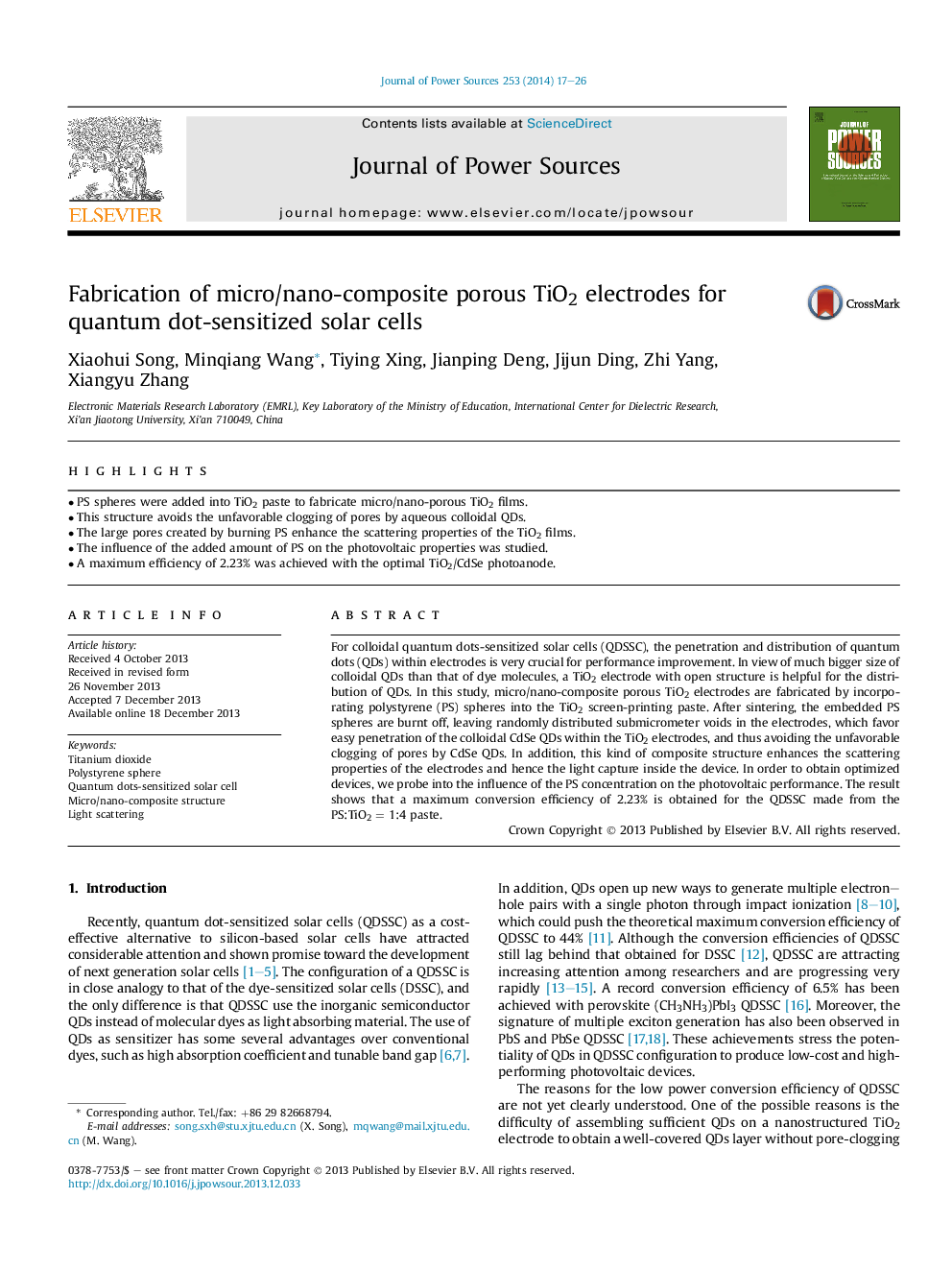| Article ID | Journal | Published Year | Pages | File Type |
|---|---|---|---|---|
| 1287109 | Journal of Power Sources | 2014 | 10 Pages |
•PS spheres were added into TiO2 paste to fabricate micro/nano-porous TiO2 films.•This structure avoids the unfavorable clogging of pores by aqueous colloidal QDs.•The large pores created by burning PS enhance the scattering properties of the TiO2 films.•The influence of the added amount of PS on the photovoltaic properties was studied.•A maximum efficiency of 2.23% was achieved with the optimal TiO2/CdSe photoanode.
For colloidal quantum dots-sensitized solar cells (QDSSC), the penetration and distribution of quantum dots (QDs) within electrodes is very crucial for performance improvement. In view of much bigger size of colloidal QDs than that of dye molecules, a TiO2 electrode with open structure is helpful for the distribution of QDs. In this study, micro/nano-composite porous TiO2 electrodes are fabricated by incorporating polystyrene (PS) spheres into the TiO2 screen-printing paste. After sintering, the embedded PS spheres are burnt off, leaving randomly distributed submicrometer voids in the electrodes, which favor easy penetration of the colloidal CdSe QDs within the TiO2 electrodes, and thus avoiding the unfavorable clogging of pores by CdSe QDs. In addition, this kind of composite structure enhances the scattering properties of the electrodes and hence the light capture inside the device. In order to obtain optimized devices, we probe into the influence of the PS concentration on the photovoltaic performance. The result shows that a maximum conversion efficiency of 2.23% is obtained for the QDSSC made from the PS:TiO2 = 1:4 paste.
